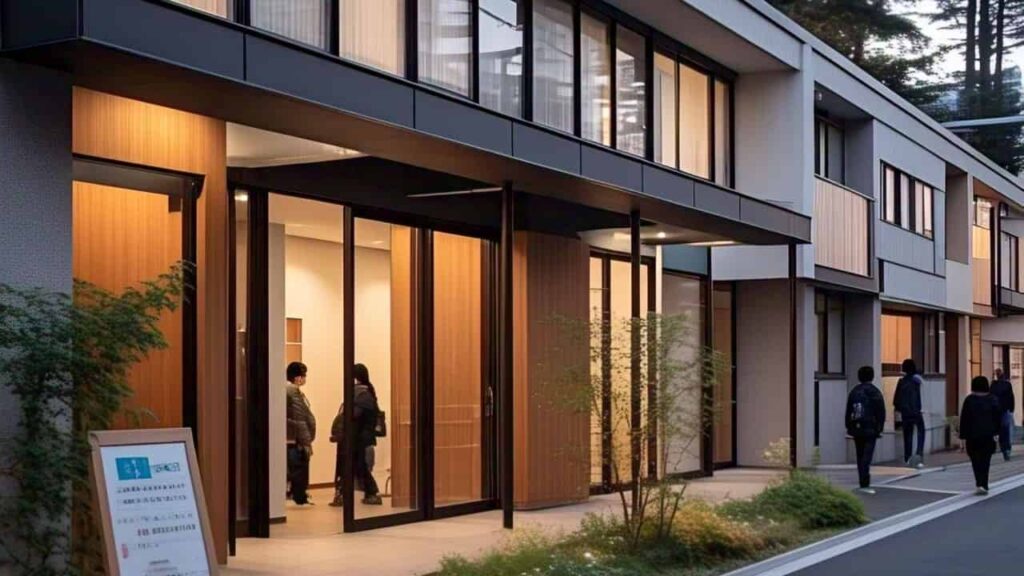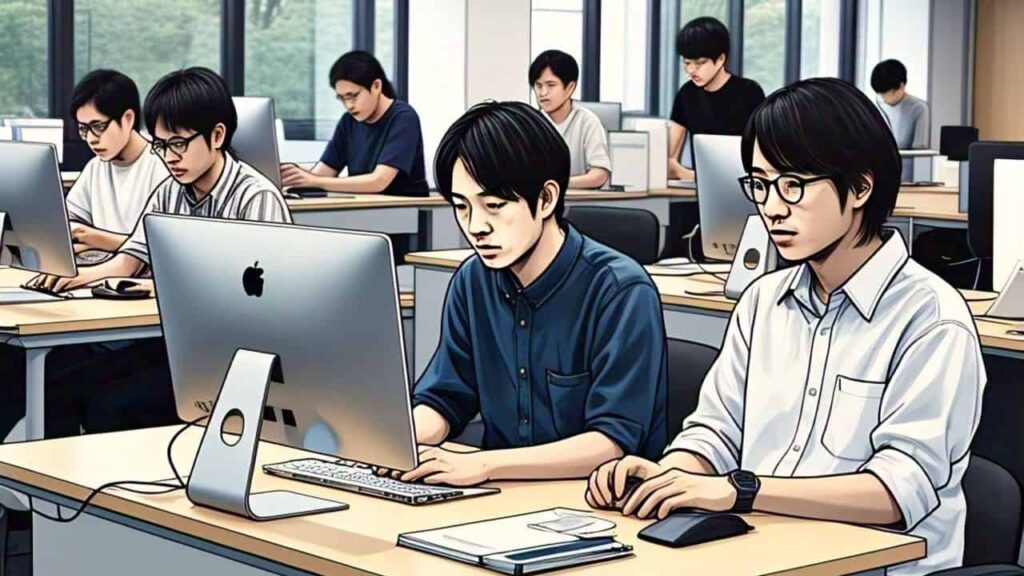
Japan is a dream destination for many students all over the world. With its rich culture, state -art -art technology and world -class education system, it is no wonder that thousands of international students come to the country with emerging sun every year. Living in Japan as a student, however, is not about cherry flower, sushi and anime – it is also about how to manage your financing as a local. In this blog post, we dive deeply in the actual cost of living for students in Japan, and provide practical suggestions and insights to help the bank take maximum benefit from our experience without breaking.
Table of Contents
Why Japan? The Allure of Studying Abroad in the East
Let’s talk about why Japan is such a popular alternative for students before we go to the Nitti-Gitty of Expenses. Japan is home to some top universities in the world, such as Tokyo University, Kyoto University and Osaka University. These institutions offer a wide range of programs in English, making it easier for international students to adapt. Beyond academics, Japan offers a unique mix of tradition and modernity. From old temples to futuristic cities there is always something new.
But leave it honest in Japan, not cheap. Although not the most expensive country in the world, it is definitely not the cheapest. In Japan, the key to being terminated as a student is to understand the costs and learn to live as a local. Then it breaks.
1. Accommodation: Finding Your Home Away from Home

- The biggest cost for students in Japan is housing. Depending on where you study, housing costs can vary greatly. For example, living in Tokyo is much more expensive than living in small cities like Fukuoka or Saporo.
- Universities daormitory: Many universities provide a dormitory for international students, which are often the cheapest alternatives. Prices typically range from ± 20,000 to drain from 50,000 per month (approx. 150 to 1250 to $ 400). However, the topics are limited, so use quickly!
- Shared apartments (Share House): Share House is a popular alternative among students. You will have your own private room, but share common areas such as kitchen and bathroom. The rental cost is usually between ± 40,000 to 80,000 per month (300 to 300 to 600 USD).
- Private apartments: If you like more privacy, a private apartment is an option. However, high costs, which vary from and 60,000 per month ($ 450 to $ 900), are based on location and size.
Remember that you have to pay a security deposit and larger funds (a non-worthy worthy gift for the landlord), who can add.
Pro Tip: Consider keeping yourself out of the center to save on rent. Japan’s public transport system is excellent, so commuting is usually practical.
2. Food: Food as a local on a budget

Japanese food is world famous, but eating every day can quickly dry your wallet. The good news is that there are many ways to enjoy delicious food without using good luck.
• Cooking at home: The most cost -effective option is to cook your own food. Japan has a reasonable value of grocery articles, especially if you shop in local supermarkets such as Aeon or Ito Yokado. A weekly grocery bill can occur based on your eating habits up to 5000 (40 to 40 to $ 80).
• Salvidha Store (Conbini): Japanese feature stores such as 7-Elavan, Family Map and Lawson are life-saving to students. They provide different types of affordable foods, snacks and drinks. A bento box or onagiri (riceball) usually costs ± 300 (2TO2TO4 USD).
• Food outside: If you want to eat out, budget -friendly options like Ramon Shops, Gudon (Beef Bowl) Restaurant and Ijakayas (Japanese Pub). A food in an informal restaurant usually occurs between FIF 800 (6TO6TO12 USD).
Pro Tip: Students benefit from discounts and lunch, which is often cheaper than the dinner menu.
3. Transport: Trutily to be around

Japan’s public transport system is one of the best in the world, but it can also be expensive if you are not careful. How to navigate it as a supporter:
• Train and T -Railway: Train is the most common transport method in Japan. A single train ticket in a city is usually between 150 (1 to 1 to 2.50 USD). If you are a regular pendulum, unlimited journey between specific stations provides.
• Buses: Buses are another option, especially in small cities. The rent typically contains ± 200 to 400 (1.50 to 1.50Toto3 USD) per trip.
• Bicycles: Many students choose to buy bicycles or rent, which is not only cheap, but is a great way to discover your city. The price of a used bicycle ($ 75 USD) can be reduced.
Pro Tip: If you are planning to travel around Japan, consider getting the Japan Rail Pass for unlimited journey on JR -train including Shinkansen (Bullet Train). It’s a bit expensive, but can save you a lot of money in a long time.
4. Utilities and Internet: Staying Connected

Tools such as electricity, gas and water in Japan are relatively affordable. On average, students can expect to pay around 10,000 to (15,000 per month (75 to 75 to 115 USD) for these services. During the winter months, heating costs can increase, so be careful about your use.
The Internet is important for students, and Venus, it’s pretty cheap. Many shares include Wi-Fi in rent in home and dormitory. If you need to establish your own internet connection, around 4000, from 6000, around 4000, around 4,00030 to $ 45).
Pro tips: Consider getting Prepaid SIM card or pocket Wi-Fi device for mobile Internet access. These are widely available and costs and 3000 to and 5000 per month (25 to25 to 40 USD).
5. Entertainment and Leisure: Balancing Fun and Budget

The study in Japan is not just about killing books – it’s also about experiencing culture and having fun. Here are described how to enjoy yourself without exceeding:
• Museums and attractions: Many museums and cultural sites offer students discounts. For example, the Tokyo National Museum provides input for only 500 ($ 4 USD) with a student ID.
• Cinema: The cost of watching a movie in Japan is almost $ 1800 ($ 14 USD), but many theaters have given today’s exemption to students.
• Knightlife: If you like nightlife, look for bars and clubs that students offer discounts or Happy Hour specialties. A drink usually costs around ± 500 (4TO4TO8 USD) at a time.
Pro tips: Take advantage of free or low cost activities, such as visiting parks, participating in local festivals or searching for a historic neighborhood.
6. Health Insurance: Staying Safe and Secure

Health insurance is compulsory for all residents of Japan, including international students. The Cost of the National Health Insurance (NHI) Program is based on Your Income, But Students Usually Pay 3,000 PER MONTH (15TO15TO25 USD). With NHI, you will Only Need to Cover 30% of your Medical Expenses, Making Healthcare and Accessible.
Pro Tip: Always Take Your Health Insurance Card With You, As You Have To Present In Hospitals and Clinics.
7. Part -Time Jobs: Earnings When You Learn

Many international students in Japan take part -time to cover their living costs. With a student visa you have been allowed to work for 28 hours per week during the school period and 40 hours per week during the holidays. Popular part -time jobs include teaching English, working shop or servers at restaurants. The average salary is around 1000 (8 to 8 to 12 USD) around 1000 per hour.
Pro Tip: To maximize your income, look for jobs that offer transport allowances or food discounts.
Last idea: Living as a local in Japan
Living in Japan as a student is an incredible experience, but it requires careful budget and plan. By understanding costs and using local habits, you can do most of your time in Japan without breaking the bank. Whether he is looking for affordable homes, making his own food or utilizing the student discount, there are many ways to live as a local and enjoy all of the Japan offer.
Then wrap the bags, brush on your Japanese and get ready for lifetime adventures. Japan is waiting for you!





